Artificial Intelligence in Learning and Development: Five Surprising Facts You Need to Know
Aug 01, 2023 | 5 min read
The last few years have been a roller coaster for learning and development professionals around the world. First, there was the abrupt transition to the hybrid workplace, which required entire organizations to upskill and reskill employees under immense pressure. With the ever-evolving world of work, C-suite executives were driving a strategic focus on organizational performance, putting learning and development and human resources professionals, as well as managers at large, in the position of having to implement large-scale initiatives under unprecedented circumstances.
If that wasn’t enough, we are now seeing emerging technologies like Artificial Intelligence (AI) opening new doors (and new risks!) for industries across the world, and the field of learning and development is not exempt from the impact of AI.
As lifelong learners, we wanted to learn more about how AI is impacting the world of work, and by extension, learning and development. Wiley Workplace Intelligence surveyed 3,000 people across industries to hear what is happening in the workplace.
1. Nearly One Third of Workplaces Are Actively Using AI
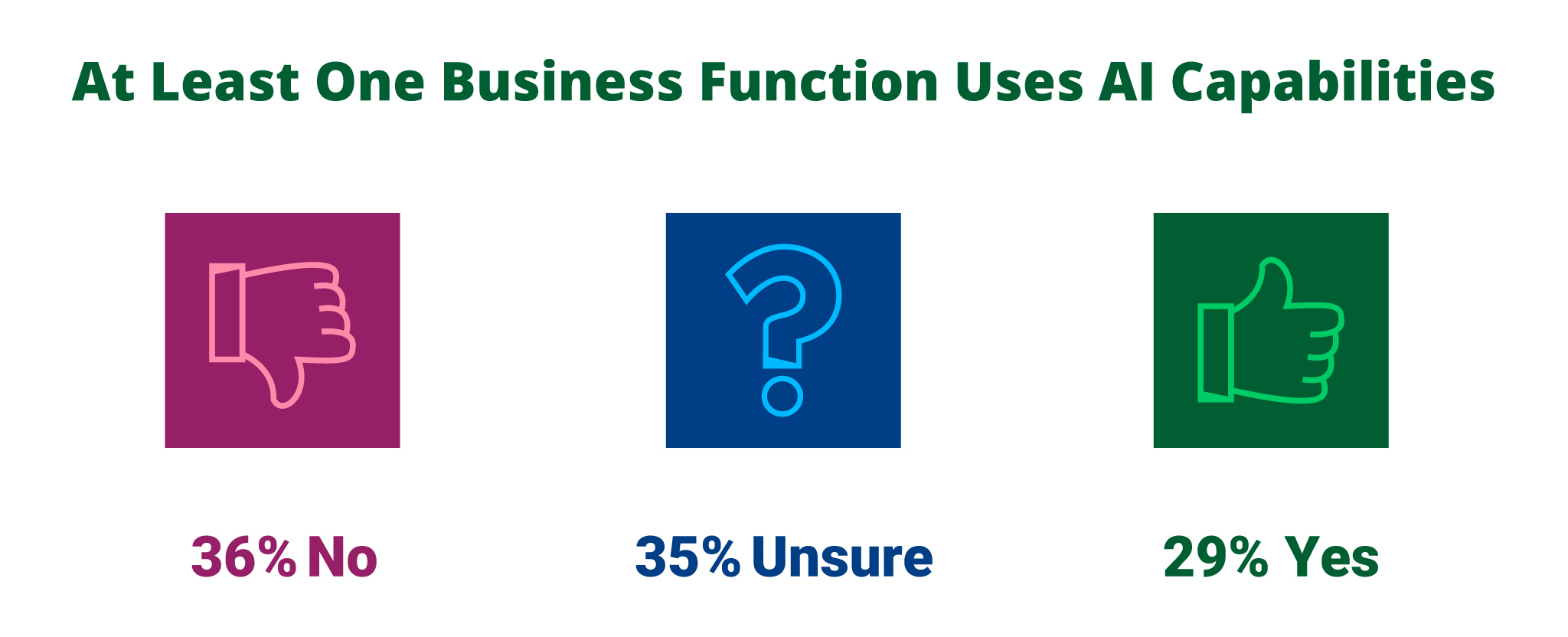
Almost one-third of those surveyed said their business has adopted AI technology in at least one business function. While AI has been around for many years, it exploded into our mainstream culture in 2022 with the launch of Chat GPT. Promised to unlock productivity, organizations around the world are actively testing AI across a range of functions to best understand its potential impact on performance. As such, we expect to see AI technology adoption accelerate in the coming year.
2. AI is Being Leveraged in Every Organizational Function
AI technology is most often being adopted in operations, marketing and sales, and product/service development. This is to be expected as these business functions would benefit from leveraging automation capabilities to increase efficiency and streamline processes.
We asked participants to select the business function(s) which have incorporated AI within their organization.
Business Function Utilizing AI
| 17% | Service Operations |
| 15% | Marketing and sales |
| 15% | Product or service department |
| 9% | Supply chain managment |
| 8% | Manufacturing |
| 7% | Strategy and corporate finance |
| 7% | Human resources and devopment |
| 6% | Risk |
(Note: Results will not equal 100% as participants could select multiple options)
As illustrated above, service operations, marketing and sales, and product development have the highest AI adoption rates. Human resources and development, as well as risk, have the lowest adoption rates.
3. Budget is the Biggest Barrier to Wider AI Utilization
Why aren’t organizations adopting AI in more business functions? Curious to find out what obstacles were keeping organizations from adopting AI, we asked participants to pick the biggest obstacle they face.
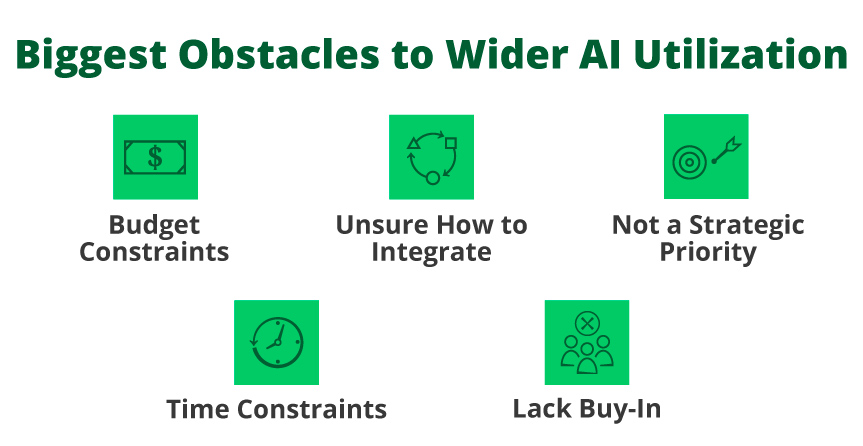
Organizations have strategic priorities they must focus time and money on that will bring the most benefit to the business. For 19% of people, AI adoption is not a strategic priority which means it likely won’t get the funding needed to move forward.
25% of people said budget constraints are a significant barrier to AI integration in their organization. AI adoption is likely a complex, costly, and time-consuming process that can require upgrading current infrastructure, software, training, and ongoing maintenance. Combined with getting buy-in from both learners and facilitators, organizations potentially face a daunting task.
4. People Still Prefer Humans to AI in Learning and Development
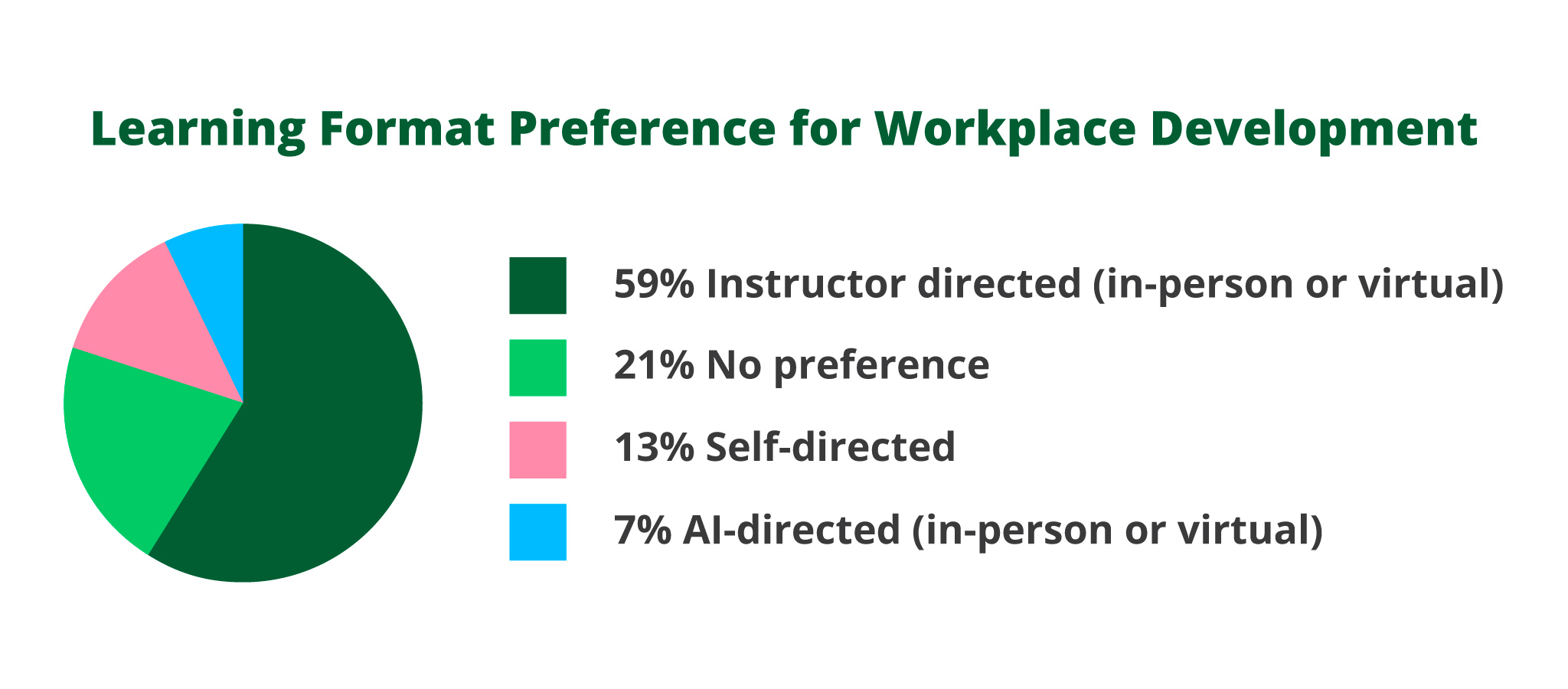
People crave human connection with 59% wanting an instructor to direct their learning.
When we explored preference about content development, we found that people have strong opinions about who should create material.
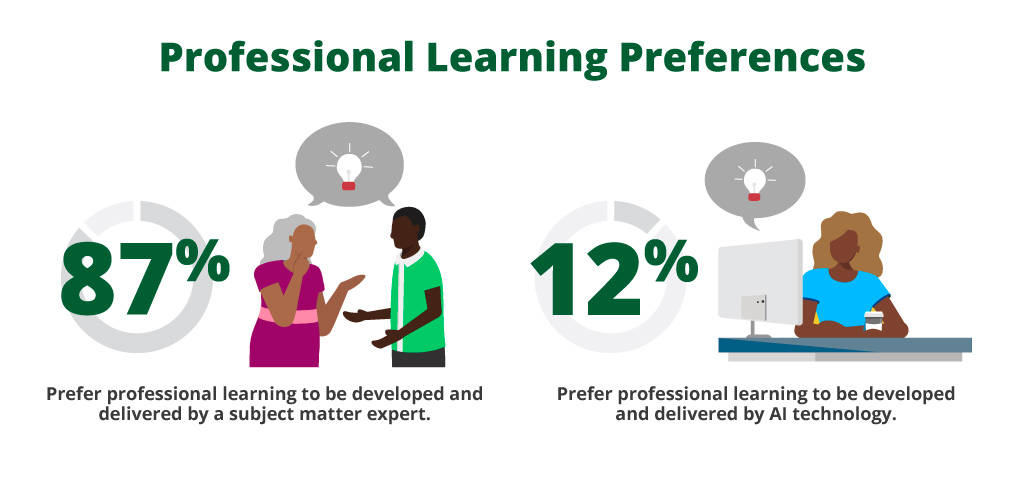
5. Learning and Development Professionals Are Optimistic About Benefits of AI
How does this impact learning and development practitioners? When strategically incorporating AI into specific areas, it can have a positive impact.
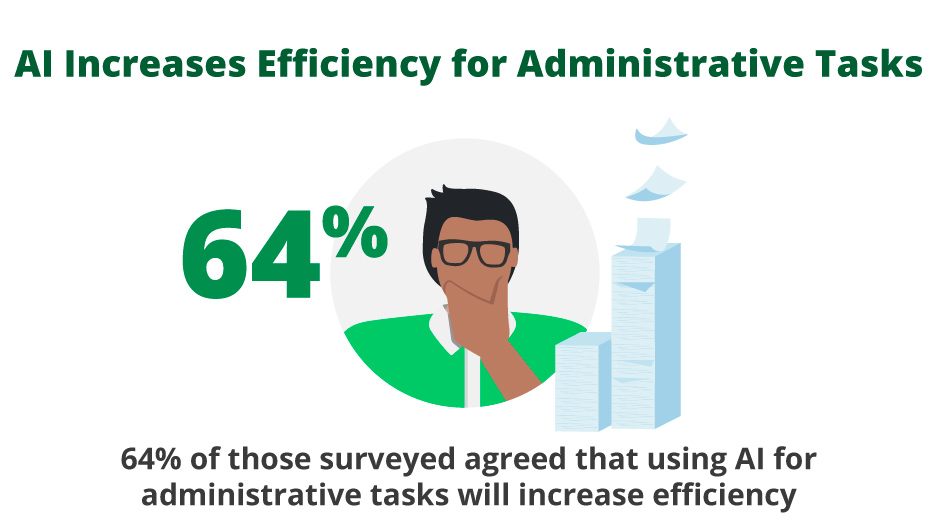
AI as an automation tool for administrative tasks allows learning and development professionals to focus their efforts on more value-added activities like curriculum design, instructional design, and learner support. This in turn allows for more meaningful and relevant learning opportunities.
Knowing people seek human connection when learning, learning and development practitioners should consider ways to continue meeting that need while incorporating technological advances into their practice. Although people may not be ready for AI-directed learning, AI capabilities can be leveraged to help find skills gaps through assessments to create learning paths for employees.
Combining AI capabilities and human interaction can be an effective way to embrace technological advancements while retaining the personal connection that comes with facilitated learning experiences that increase connection and cohesion in the workplace. Whether you implement trust-building teamwork solutions like The Five Behaviors, empathy and cohesion-building experiences like Everything DiSC, or leadership development solutions like The Leadership Challenge combining the power of AI and the power of human connection can elevate your entire organization.
